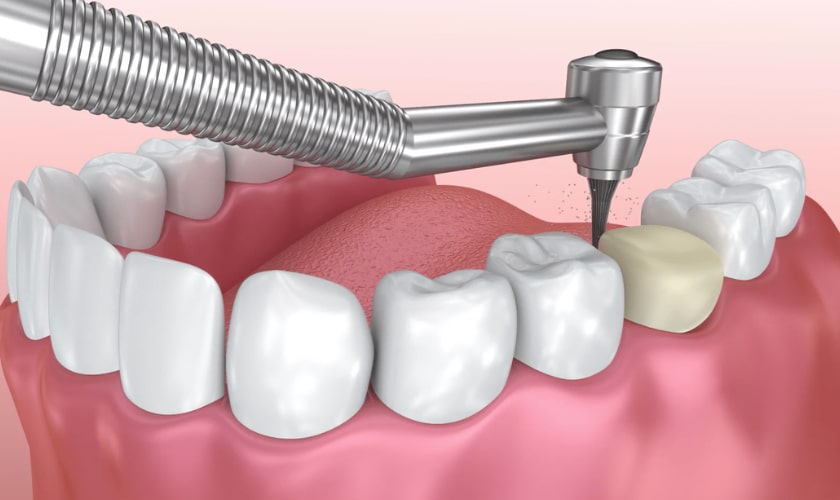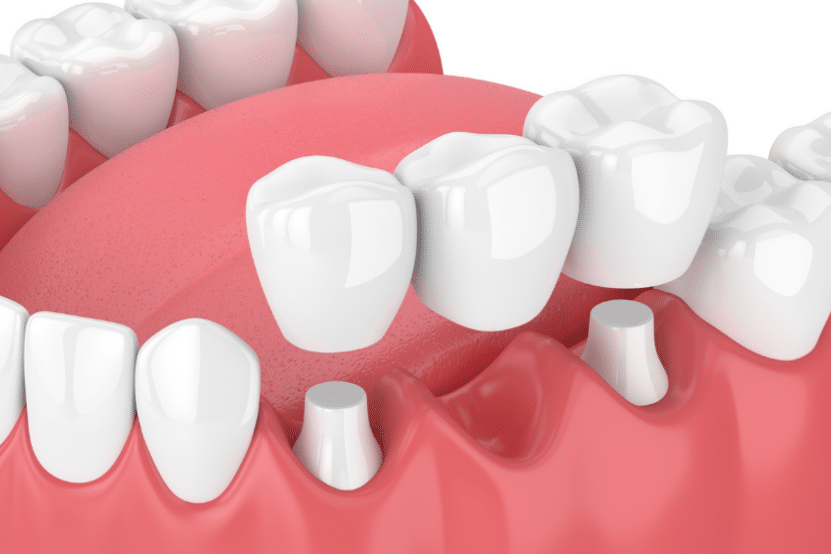
Everything You Need to Know About Getting Porcelain Crowns
Are you tired of feeling self-conscious about your smile? Porcelain crowns may just be the solution for you! These dental restorations can improve the appearance and functionality of damaged or decayed teeth. But before diving into this cosmetic dentistry procedure, it’s important to understand what porcelain crowns are, how they work, and what to expect during the process. This comprehensive guide will cover everything you need to know about getting porcelain crowns so that you can make an informed decision and achieve a brighter, healthier smile.
What are Porcelain Crowns?
Porcelain crowns are caps that are placed over teeth to restore their shape, size, and strength. They can be used to protect a tooth from decay or to cover up a discolored or misshapen tooth. Porcelain crowns are also sometimes called “caps.”
Porcelain crowns are made from a mold of your tooth, and then they are custom-made to fit over your tooth. The porcelain is matched to the color of your natural teeth so that it looks like a real tooth.
Porcelain crowns are placed over the top of your natural tooth and then bonded into place. This helps to make sure that the crown stays in place and does not come off easily.
Porcelain crowns can last for many years, but they will eventually need to be replaced. You should see your dentist for regular checkups so that he or she can check on the condition of your porcelain crowns.
The Benefits of Porcelain Crowns
Porcelain crowns offer a number of benefits over other types of dental crowns. They are more aesthetically pleasing because they can be matched to the color of your natural teeth. They are also stronger and more durable than other types of crowns, making them ideal for people who have strong biting or chewing habits. And because they are less likely to chip or break than other types of crowns, porcelain crowns can last for many years with proper care.
Types of Porcelain Crowns
Porcelain crowns are an extremely popular choice for dental patients who are looking to improve the appearance of their smile. There are many different types of porcelain crowns available on the market today, each with its own unique set of benefits and drawbacks. Here, we will take a closer look at the most popular types of porcelain crowns so that you can make an informed decision about which one is right for you.
The most common type of porcelain crown is the all-porcelain crown. All-porcelain crowns are made entirely out of porcelain, which gives them a natural look that closely resembles your real teeth. They are also very strong and durable, making them a great choice for people who have active lifestyles. However, all-porcelain crowns can be more expensive than other types of crowns, and they may not be as strong as some of the other options.
Another popular option is the porcelain-fused-to-metal (PFM) crown. These crowns are made by bonding a metal base to a layer of porcelain. PFM crowns are strong and durable, and they can often be made to match the color of your natural teeth quite closely. However, PFM crowns can sometimes show the metal beneath the porcelain, which some people find to be unattractive.
Finally, there are composite resin crowns. Composite resin is a
How to Prepare for a Porcelain Crown Procedure
If you’re considering getting porcelain crowns, there are a few things you should do to prepare for the procedure. First, consult with your dentist to see if porcelain crowns are right for you. Once you’ve decided to proceed with the procedure, your dentist will take x-rays and impressions of your teeth to determine the size and shape of your crowns.
Next, you’ll need to choose the color of your crowns. You can either match the color of your existing teeth or choose a new shade altogether. Once you’ve made your selection, your dentist will place temporary crowns on your teeth to protect them during the procedure.
When you’re ready for your appointment, be sure to brush and floss your teeth thoroughly. This will help ensure that your crowns fit properly and last longer. During the procedure, your dentist will remove any decay from your teeth and then place the porcelain crowns over them. Once in place, your dentist will adjust and polish your new crowns so they look natural and blend in with the rest of your smile.

The Procedure for Getting a Porcelain Crown
When you get a porcelain crown, your dentist will first remove any decay from your tooth. They will then shape the tooth so that the crown can fit over it. Next, they will take an impression of your tooth so that the crown can be made to match it. Once the crown is ready, your dentist will place it on your tooth and make sure that it fits properly. Finally, they will cement the crown in place and polish it so that it looks natural.
Aftercare Tips for Porcelain Crowns
If you’ve recently had a porcelain crown or bridge fitted, congratulations! Porcelain restorations are some of the most durable and lifelike dental treatments available. However, like all dental work, they require proper care to stay in good condition. Here are a few aftercare tips to help you keep your new porcelain crowns looking great:
-Brush and floss regularly: Just because you have artificial teeth doesn’t mean you can skip out on brushing and flossing! In fact, it’s even more important to clean your teeth well if you have porcelain crowns, since plaque and bacteria can build up around them more easily. Be sure to brush at least twice a day and floss once a day.
-See your dentist regularly: It’s important to see your dentist every 6 months for a checkup and cleaning, even if you’re taking good care of your teeth at home. Your dentist will be able to spot any potential problems with your porcelain crowns early on and treat them before they become serious.
-Avoid hard foods: Biting into hard candy or ice cubes can crack or chip your porcelain crowns. So can chewing on hard objects like pencils or pens. To avoid damaging your crowns, stick to soft foods and avoid chewing on anything hard.
-Be careful with toothpaste: Some types of toothpaste (including whitening toothpaste) can be
Alternatives to Porcelain Crowns
If you’re considering getting porcelain crowns, you may be wondering if there are any alternative options. While porcelain crowns are a popular choice for many people, they’re not the only option. Here are some other choices to consider:
1. Composite Resin Crowns: Composite resin crowns are made from a mixture of plastic and glass particles. They’re less expensive than porcelain crowns and can be matched to the color of your natural teeth. However, they’re not as durable as porcelain crowns and may not last as long.
2. Porcelain-Fused-to-Metal Crowns: These crowns are made from a metal base with a porcelain veneer. They’re stronger than composite resin crowns and can last for many years. However, they may not match the color of your natural teeth as well as porcelain crowns do.
3. Gold Crowns: Gold crowns are made from an alloy of gold, copper, and other metals. They’re strong and durable, but they can be expensive and may not match the color of your natural teeth.
4. Stainless Steel Crowns: Stainless steel crowns are less expensive than other types of metal crowns but they’re also less durable. They may be a good choice for temporary crowned teeth or for children who still have baby teeth.
5. Dental Implants: Dental implants are
Conclusion
Porcelain crowns are a great way to restore the look of your teeth, whether you need to replace an existing filling or cover up discolored enamel. We hope this article has answered all your questions about porcelain crowns, from what they are made of to how long they last and everything in between. If you think porcelain crowns might be right for you, talk to your dentist today and find out more about what these restorative treatments have to offer.
The entire process usually takes two visits to the dentist. During the first visit, the tooth is prepared and an impression is made. This impression is used to create the custom crown, which is then fitted and cemented in place during the second visit.
Most dental insurance plans cover at least a portion of the cost of porcelain crowns. However, it’s always best to check with your particular plan to see what their coverage entails.


